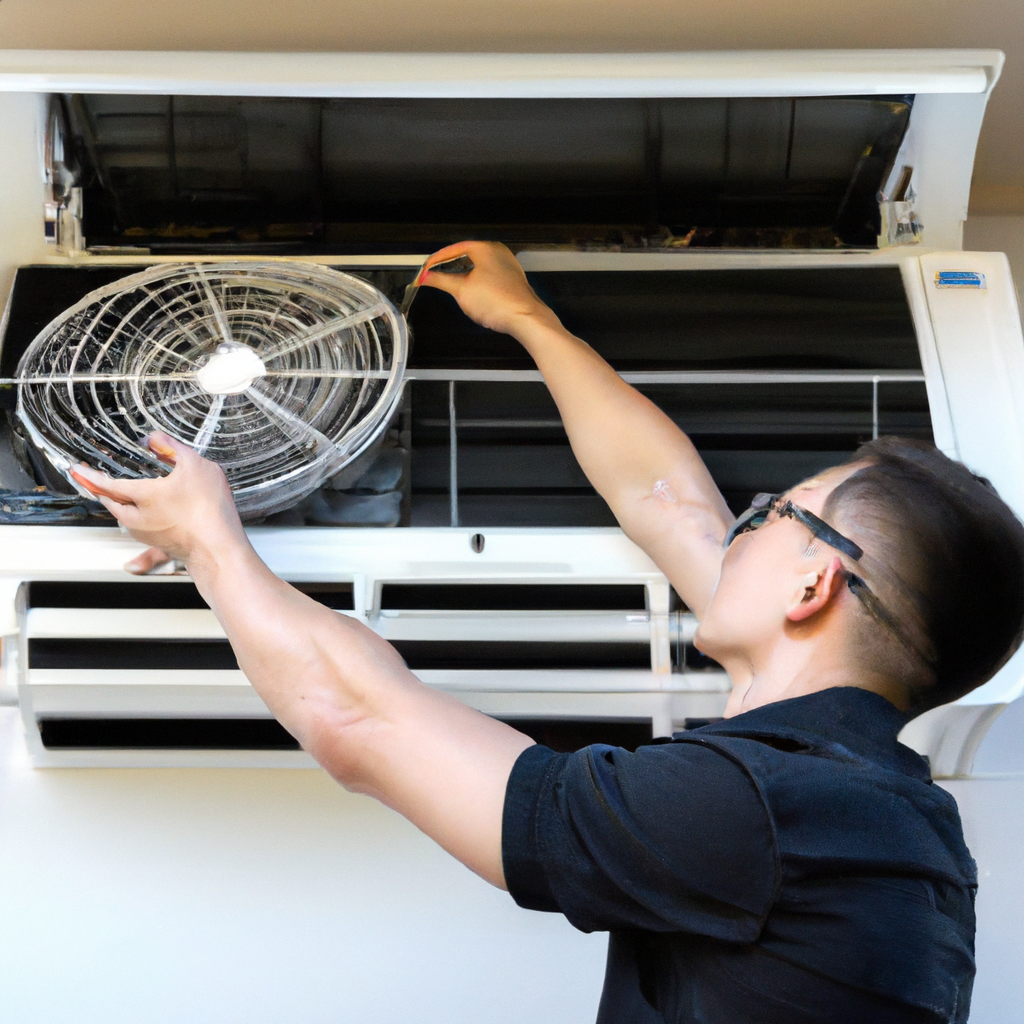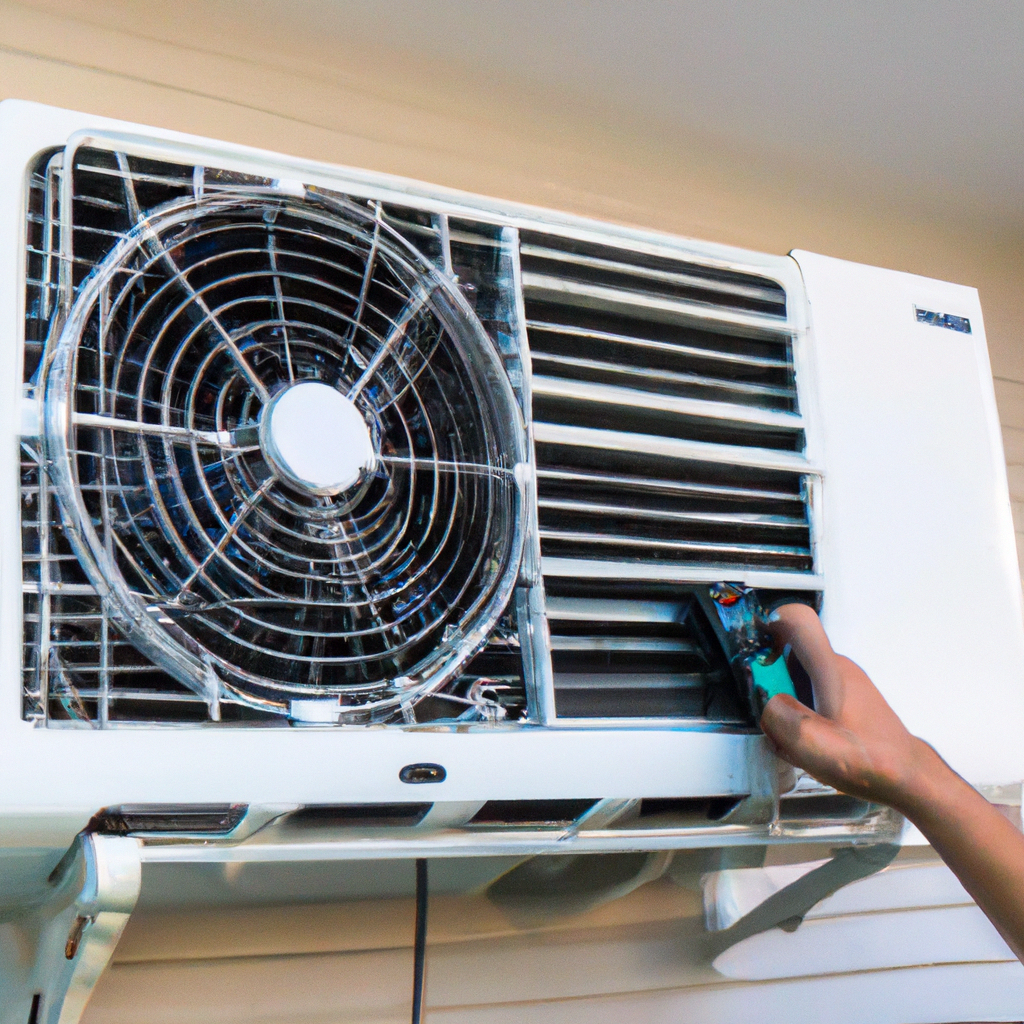In “A Comprehensive Guide To Air Conditioner Installation: Tips And Tricks,” you will find valuable information to help you navigate the process of installing an air conditioner with ease and efficiency. This guide, brought to you by Stay Cool HVAC in Florida, provides an extensive overview of various HVAC services and their benefits, ensuring year-round comfort for both residential and commercial spaces. Whether you are considering split systems, mini splits, package systems, heat pumps, electric heat, air duct work, or insulation, this guide is designed to equip you with essential tips and tricks for a successful and hassle-free air conditioner installation.

1. Choosing the Right Air Conditioner
When it comes to choosing the right air conditioner for your needs, there are several factors to consider.
Determining the BTU Requirement
The first step in selecting an air conditioner is to determine the BTU (British Thermal Units) requirement for your space. BTU is a measurement of the cooling capacity of an air conditioner, and choosing the right BTU rating is crucial for effective cooling. To determine the BTU requirement, calculate the square footage of the area that needs to be cooled and match it to the appropriate BTU rating for optimal performance.
Considering Energy Efficiency Ratings
Energy efficiency is an important factor to consider when selecting an air conditioner. Look for units with a high SEER (Seasonal Energy Efficiency Ratio) rating. The higher the SEER rating, the more energy-efficient the unit is, resulting in lower energy bills and reduced environmental impact.
Selecting the Proper Size
Choosing the right size air conditioner is crucial for efficient cooling. An undersized unit will struggle to cool your space, while an oversized unit will cycle on and off frequently, resulting in energy wastage. Consider factors such as room size, insulation, and ceiling height when determining the proper size air conditioner for your needs.
Deciding Between Window or Central AC
One important decision to make is whether to choose a window or central air conditioner. Window units are often more affordable and easier to install, making them a popular choice for smaller spaces. On the other hand, central air conditioning provides more even cooling throughout the entire home or building and offers greater control over temperature settings.
Exploring Different Types of Air Conditioners
There are various types of air conditioners available, including split systems, mini splits, package systems, and heat pumps. Each type has its own advantages and considerations. Take the time to research and explore the different options to determine which type of air conditioner best suits your needs and budget.
2. Preparing for Installation
Proper preparation is essential for a successful air conditioner installation. Before you begin the installation process, there are a few key steps to take.
Checking Local Regulations and Permits
Before installing an air conditioner, it is important to check local regulations and obtain any necessary permits. Different areas may have specific requirements and regulations regarding the installation of air conditioning units. Failure to comply with these regulations could result in fines or other penalties.
Ensuring Proper Electrical Setup
Ensure that your electrical setup is capable of handling the electrical requirements of the air conditioner you have chosen. This may involve upgrading your electrical system or installing a dedicated circuit. It is important to consult with a qualified electrician to ensure that the electrical setup meets the necessary requirements for the air conditioner installation.
Determining Ideal Location for AC Unit
Selecting the ideal location for your air conditioner unit is crucial for efficient cooling. Consider factors such as proximity to electrical outlets, ease of access for maintenance, and noise considerations when determining the location. It is recommended to place the unit in a shaded area to prevent excessive heat buildup and improve overall efficiency.
Properly Insulating the Installation Area
Proper insulation around the installation area is important to prevent air leaks and ensure optimal cooling efficiency. Insulating the area around the unit will help to keep cool air in and hot air out. Use appropriate insulating materials and ensure proper installation to maximize the effectiveness of the insulation.
Planning for Ductwork Modifications
If you are installing a central air conditioning system, you may need to make modifications to your existing ductwork. Proper ductwork installation and insulation are essential for even distribution of cooled air throughout your home or building. Consult with a professional HVAC technician to ensure that the ductwork modifications are carried out correctly.

3. Gathering Required Tools and Materials
Before you begin the installation process, it is important to gather all the necessary tools and materials. Having everything on hand will make the installation process smoother and more efficient.
Basic Hand Tools
Some basic hand tools that you may need include a screwdriver set, pliers, adjustable wrenches, a utility knife, wire cutters, and a tape measure. These tools will be used for tasks such as removing screws, tightening fittings, and cutting materials.
Ductwork Tools
If you are installing a central air conditioning system or making modifications to your existing ductwork, you may need additional tools specific to ductwork installation. This may include tools such as duct crimpers, shears, and a duct knife.
Electrical Tools
Ensure that you have the necessary electrical tools for connecting the electrical wiring of the air conditioner. These tools may include wire strippers, wire connectors, a voltage tester, and electrical tape.
Sealing Materials
Proper sealing is essential to prevent air leaks in your air conditioning system. Depending on the type of installation, you may need sealing materials such as duct tape, foil tape, or mastic sealant. Consult with a professional or follow the manufacturer’s instructions to determine the appropriate sealing materials for your specific installation.
Insulation Materials
In addition to insulating the installation area, you may also require insulation materials for your ductwork. Insulation helps to prevent condensation and maintain temperature control. Materials such as fiberglass duct insulation or foam insulation sleeves may be necessary for insulating the ductwork properly.
Mounting Hardware
If you are installing a window air conditioner, you will likely need mounting hardware such as brackets, screws, and support brackets. Consult the manufacturer’s instructions or seek professional guidance to ensure that you have the appropriate mounting hardware for the specific air conditioner model you are installing.
4. Steps for Air Conditioner Installation
Once you have gathered all the necessary tools and materials and completed the necessary preparations, it’s time to begin the air conditioner installation process. Follow these steps for a successful installation.
Shutting off Power Supply
Before starting any work, ensure that the power supply to the area where the air conditioner will be installed is shut off. This can be done by turning off the circuit breaker or removing the fuse that controls the power to the area. This step is crucial to prevent electrical accidents during the installation process.
Removing Old AC Unit (if applicable)
If you are replacing an existing air conditioner, you will need to remove the old unit before installing the new one. Follow the manufacturer’s instructions or seek professional guidance to safely uninstall the old air conditioner. Proper disposal of the old unit is also important; check local regulations for guidelines on how to dispose of old appliances.
Installing the Mounting Bracket
For window air conditioners, installing the mounting bracket is the next step. The mounting bracket provides support for the unit and helps to ensure stability. Follow the manufacturer’s instructions to securely install the mounting bracket, ensuring that it is level and capable of supporting the weight of the air conditioner.
Connecting the Electrical Wiring
Carefully connect the electrical wiring of the air conditioner, following the manufacturer’s instructions and any applicable local electrical codes. If you are unsure about any aspect of electrical wiring, it is recommended to seek the assistance of a licensed electrician to ensure safe and proper installation.
Securing the AC Unit to the Mounting Bracket
Once the electrical wiring is complete, carefully lift the air conditioner and place it onto the mounting bracket. Follow the manufacturer’s instructions to secure the unit to the bracket using the provided hardware. This step is important to ensure that the air conditioner is securely in place and will not pose a safety risk.
Connecting the Refrigerant Lines
If you are installing a split system or mini-split air conditioner, connecting the refrigerant lines is an important step. Consult the manufacturer’s instructions or seek professional guidance to ensure that the refrigerant lines are properly and securely connected. Improper installation of the refrigerant lines can result in inefficient cooling or refrigerant leaks.
Testing for Refrigerant Leaks
After connecting the refrigerant lines, it is essential to test for refrigerant leaks. This can be done using a refrigerant leak detector or by applying a soap solution to the connections and checking for any bubbles, which indicate a leak. If a refrigerant leak is detected, it is crucial to address the issue before continuing with the installation process.
Installing and Sealing Ductwork (if necessary)
If you are installing or modifying ductwork for a central air conditioning system, this step involves installing the ductwork and ensuring proper sealing. Follow the manufacturer’s instructions or consult with a professional to determine the correct installation and sealing methods for your specific ductwork configuration.
Installing the Thermostat
For central air conditioning systems, installing the thermostat is an important step in the installation process. Follow the manufacturer’s instructions to mount the thermostat and wire it to the air conditioner and electrical system. Carefully program the thermostat according to your preferences and desired temperature settings.
Checking Airflow and Adjusting Registers
Once the installation is complete, it is important to check the airflow in each room and adjust the registers as necessary. Ensure that the vents are open and unobstructed to allow for maximum airflow. Adjust the registers to achieve even cooling throughout the space.

5. Troubleshooting and Safety Tips
Even with proper installation, issues may arise during or after the air conditioner installation process. Here are some troubleshooting tips and safety precautions to keep in mind.
Basic Troubleshooting Techniques
If the air conditioner is not cooling properly or if you encounter any other issues, there are some basic troubleshooting techniques you can try before seeking professional assistance. These include checking for tripped circuit breakers, replacing the air filter, cleaning the condenser coils, and ensuring that the thermostat is set correctly.
Common Installation Mistakes to Avoid
To ensure a successful installation, it is important to avoid common mistakes that can impact the performance and safety of the air conditioner. These include improper electrical connections, inadequate insulation, incorrect refrigerant line installation, and poor ductwork sealing. Take the time to carefully follow the manufacturer’s instructions or seek professional guidance to avoid these mistakes.
Safety Precautions during Installation
Throughout the installation process, it is important to prioritize safety. Always shut off the power supply before starting any work and use personal protective equipment, such as gloves and safety glasses, when necessary. Take precautions to avoid injury, such as using proper lifting techniques, avoiding contact with sharp objects, and being aware of potential electrical hazards.
Using Proper Lifting Techniques
Air conditioning units can be heavy and bulky, so it is crucial to use proper lifting techniques to avoid strain or injury. Lift with your legs, not your back, and seek assistance if needed. Consider using lifting straps or a dolly to transport the unit safely and prevent injuries.
Protecting Electrical Components
Ensure that all electrical components are protected during the installation process. Avoid exposing electrical wires to moisture or damage and take care not to pinch or tear any wires when securing the air conditioner in place. Protecting the electrical components will help prevent electrical issues and ensure the safe operation of the unit.
Ensuring Proper Ventilation
Proper ventilation is essential for the efficient operation of your air conditioner. Ensure that the area around the unit is clear of obstructions and that vents are not blocked. Adequate ventilation will help prevent overheating and maximize the cooling effectiveness of the air conditioner.
6. Maintenance and Care for AC Units
Regular maintenance and care are important to keep your air conditioning unit running smoothly and efficiently. Here are some tips for maintaining your AC unit.
Regular Filter Replacement
Regularly replacing the air filter is an essential maintenance task that helps to maintain optimal airflow and efficiency. Consult the manufacturer’s instructions for the recommended filter replacement schedule and follow it accordingly.
Cleaning the Outdoor Condenser Unit
The outdoor condenser unit is exposed to dust, debris, and weather elements, which can hinder its performance. Regularly clean the condenser coils and remove any debris, such as leaves or grass clippings, that may have accumulated around the unit. This will help maintain proper airflow and prevent potential damage.
Removing Debris from Vents
Inspect and clean the indoor vents regularly to remove any dust or debris that may have accumulated on the grilles. This will help ensure proper airflow and maintain the cooling efficiency of the air conditioner.
Checking and Cleaning Ductwork
Periodically inspect and clean the ductwork to remove any dust, dirt, or mold that may have accumulated. Duct cleaning can help improve indoor air quality and prevent any blockages that may hinder airflow.
Scheduling Professional Maintenance
While regular maintenance tasks can be performed by homeowners, it is recommended to schedule professional maintenance at least once a year. A professional technician can thoroughly inspect and tune up your air conditioning system, identifying any potential issues and ensuring its optimal performance.
Tips for Extending the Lifespan of AC Unit
To extend the lifespan of your air conditioning unit, consider the following tips:
- Keep the area around the unit clean and clear of obstructions.
- Schedule regular maintenance to address any potential issues promptly.
- Use a programmable thermostat to optimize temperature settings and reduce unnecessary cooling.
- Keep the air filter clean and replace it regularly.
- Avoid overworking the air conditioner by closing doors and windows when it’s running.
- Consider installing a shade or awning to protect the outdoor unit from excessive heat or sunlight.

7. Troubleshooting Common AC Problems
Even with proper maintenance, air conditioners can sometimes experience issues. Here are some common problems you may encounter and troubleshooting tips to help resolve them.
No Cool Air
If the air conditioner is running but not producing cool air, there may be several potential causes. Check if the thermostat is set to the correct temperature and ensure that the air filter is clean. If neither of these is the issue, there may be a problem with the compressor or refrigerant levels, which may require professional assistance.
Insufficient Cooling
If the air conditioner is not cooling the space as effectively as it should, there may be issues with airflow or refrigerant levels. Check the air filter for any clogs and ensure that the vents are open and unobstructed. If these steps do not resolve the issue, it is recommended to seek professional assistance to diagnose and address the problem.
Frozen Evaporator Coil
A frozen evaporator coil can occur due to issues such as restricted airflow or low refrigerant levels. If you notice ice forming on the evaporator coil, turn off the air conditioner and allow it to thaw completely. Check the air filter and vents for any obstructions. If the issue persists, it is best to consult with a professional to identify and resolve the underlying cause.
Water Leaks
Water leaks from the air conditioner can be caused by a variety of factors, such as a clogged condensate drain line or a faulty condensate pump. If you notice water pooling around the unit or leaking from the indoor unit, turn off the air conditioner and address the issue promptly to prevent water damage or mold growth. Consult with a professional to diagnose and fix the problem.
Strange Noises
Unusual noises coming from the air conditioner can indicate underlying issues. Common causes of strange noises include loose components, refrigerant leaks, or problems with the fan motor. If you hear any unusual noises, it is advised to turn off the air conditioner and contact a professional to inspect and repair the unit.
Electrical Issues
If you experience electrical issues with your air conditioner, such as tripped circuit breakers or frequent power fluctuations, it is crucial to address them promptly. Electrical issues can pose safety hazards and may indicate underlying wiring or electrical component problems. Contact a qualified electrician to diagnose and resolve any electrical issues.
8. Energy-Saving Tips and Additional Features
To optimize energy efficiency and maximize cost savings, consider implementing the following tips and exploring additional features for your air conditioning system.
Setting Optimal Temperature
Set your thermostat to an optimal temperature for comfort and energy efficiency. Every degree higher or lower can impact energy consumption. Consider setting the temperature slightly higher when you’re away from home and lower when you’re occupying the space.
Utilizing Programmable Thermostats
Programmable thermostats allow you to set temperature schedules throughout the day, tailoring cooling to your needs. Take advantage of this feature to optimize energy efficiency and reduce unnecessary cooling when you are not at home.
Using Zone Control Systems
Zone control systems divide your home or building into separate cooling zones, allowing you to control the temperature in each zone independently. This can help reduce energy consumption by only cooling occupied areas and tailoring cooling to individual preferences.
Taking Advantage of Smart AC Technology
Smart AC technology allows you to control and monitor your air conditioner remotely through a mobile app or voice commands. This feature provides convenience and the ability to optimize energy consumption by adjusting settings based on occupancy and outdoor conditions.
Exploring Energy-Efficient Air Filters
Consider using energy-efficient air filters with a higher MERV (Minimum Efficiency Reporting Value) rating. These filters can help improve indoor air quality and reduce energy consumption by minimizing the strain on the air conditioning system.
Sealing Air Leaks
Air leaks can lead to energy wastage by allowing cool air to escape and hot air to enter. Ensure that windows and doors are properly sealed to prevent air leaks and optimize energy efficiency. Weatherstripping and caulking can be used to seal any gaps or cracks.

9. Hiring Professional vs. DIY Installation
When it comes to air conditioner installation, you have the option of hiring a professional HVAC technician or choosing the do-it-yourself (DIY) route. Consider the following factors when deciding which option is best for you.
Benefits of Hiring a Professional
Hiring a professional HVAC technician comes with several advantages. They have the knowledge, expertise, and specialized tools to carry out a professional installation, ensuring optimal performance and safety. Professionals can also identify and address any potential issues or complications during the installation process.
Cost Comparison
The cost of professional installation may vary depending on factors such as the complexity of the installation, the type of air conditioner, and your location. However, hiring a professional can provide peace of mind knowing that the installation is done correctly and efficiently. DIY installation may initially seem more cost-effective, but it can be time-consuming and may lead to costly mistakes if not done properly.
Considerations for DIY Installation
If you have experience and knowledge in HVAC systems or have successfully completed similar installations in the past, DIY installation may be an option for you. It is essential to carefully research and understand the installation process and requirements before attempting a DIY installation. Be prepared to invest time, effort, and additional resources into the project.
When to Seek Professional Assistance
If you are unsure about any aspect of the installation process, it is recommended to seek professional assistance. HVAC systems involve electrical and refrigerant components, which require specialized knowledge and expertise. Improper installation can lead to performance issues, safety hazards, and even void the manufacturer’s warranty.
10. Conclusion
Installing an air conditioner is a significant investment that requires careful consideration and proper execution. By following the steps outlined in this comprehensive guide, you can ensure a successful air conditioner installation and enjoy efficient cooling for years to come.
Remember to select the right air conditioner size and type for your needs, properly prepare for installation, gather the necessary tools and materials, and follow the installation steps with precision. Regular maintenance and care will help keep your air conditioner running smoothly, and troubleshooting tips can assist in addressing common issues. Explore energy-saving tips and consider hiring a professional for installation if you’re unsure about completing the process yourself.
By understanding the installation process and taking the necessary precautions, you can achieve optimal cooling comfort and maximize the lifespan of your air conditioning unit. Stay cool and comfortable with a properly installed and well-maintained air conditioner.
